Thanks for your support! If you make a purchase using our links in this article, we may make a commission. And, as an Amazon Associate, I earn from qualifying purchases. See the full disclosure here.
Updated May 3, 2024
Now that you’ve dumped your tanks, now it’s time to put the RV sewer hose away.
But, to finish the job correctly, you must first clean the hose before storing it away.
So read on to learn How to Clean and Store an RV Sewer Hose.
- Do You Need An RV Sewer Hose?
- Steps to Clean Your RV Sewer Hose
- How to Clean Sewer Hose Fittings
- Is There a Way to Disinfect an RV Sewer Hose?
- How To Store an RV Sewer Hose
- Where Do You Store Sewer Hose Fittings?
- Can I Use My Freshwater Hose to Clean My Sewer Hose?
- Final Words About RV Sewer Hoses
- Related Reading:
- Mike Scarpignato – Bio
Do You Need An RV Sewer Hose?
In most cases, yes, you will need a sewer hose. In order to dump your RV tanks or connect them to hookups you require a sewer hose.
For the majority of RVs boondockers included this is the case. Cassette toilets are really the only situation where a sewer hose isn’t required. Cassette toilets are self-contained and the tank portion is removable to empty.
Steps to Clean Your RV Sewer Hose
Learning how to clean your RV sewer hose properly is one of the not-so-fun but absolutely necessary steps to being a responsible RV owner (or renter).
At any rate, before you can store your sewer hose inside your RV, you have to clean it. There is simply no way around it.
That said, doing so doesn’t have to be such a drag. After all, it’s just one little necessity (out of many) that allows you to enjoy the freedoms you know and love while RVing.
Here are a few easy-to-follow steps to clean your RV sewer hose:
- Flush the black water pipe first when dumping as it contains the dirtiest water and residue
- Flush the gray water pipe second when dumping as it is less dirty and helps to rinse some of the black water from the hose
- Attach a sewer hose cleaner attachment to your RV sewer hose and use a garden or utility hose to finish cleaning it for several more minutes
How to Clean Sewer Hose Fittings
Cleaning a sewer hose also involves the fittings that come with it. The model of your sewer hose and fittings, and factors such as how often you use them, will determine how often the fittings need extra cleaning. As with the best dumping order, and cleaning methods, the best way to clean sewer hose fittings is up for debate.
Many RVers find that simply disconnecting the fittings from the RV and sewer hose and soaking them overnight in a bucket of bleach and water is the best way to clean them. The next morning, all you have left to do is dump the bucket out, spray the fittings down with a water hose, and let them air dry before reconnecting and/or storing them.
Here are a few steps for cleaning sewer hose fittings:
- Remove the fittings from the RV and sewer hose
- Spray down or otherwise rinse the fittings
- Add water and bleach to a large bucket or container and place the fittings inside to soak for several hours
- Remove the fittings, rinse them, and leave them to air-dry
- Reattach them to the RV, or hose, or store them
Is There a Way to Disinfect an RV Sewer Hose?
Bottom line? There is no 100 percent effective way to sanitize an RV sewer hose and keep it that way forever. Especially if it is being used each season. That said, people have derived many home remedies for keeping their RV sewer hoses as clean as possible.
Disinfecting your RV sewer hose after camping trips and before storage in between RV seasons (whatever length of time that may be for you) is absolutely doable and worthy of your time.
To disinfect an RV sewer hose, all you need to do is disconnect both ends of your hose (which they should already be if you have dumped and cleaned it recently), add several gallons of water and bleach into the hose, and leave it to soak overnight.
Once you’ve added the bleach and water, cap off both ends or connect them together and then shake the hose up well. You want to make sure the bleach solution is thoroughly sloshed around on the inside before leaving it to do its job overnight. The next morning, or later that evening if you are in a hurry, uncap the hose and thoroughly rinse it out, and leave to air dry before storing.
How To Store an RV Sewer Hose
As the old saying goes “there are more ways than one to skin a cat.” When it comes to how to store an RV sewer hose, the saying couldn’t be any more accurate.
Here are a few of the best ways we have learned to store an RV sewer hose:
1. RV Sewer Hose Bin
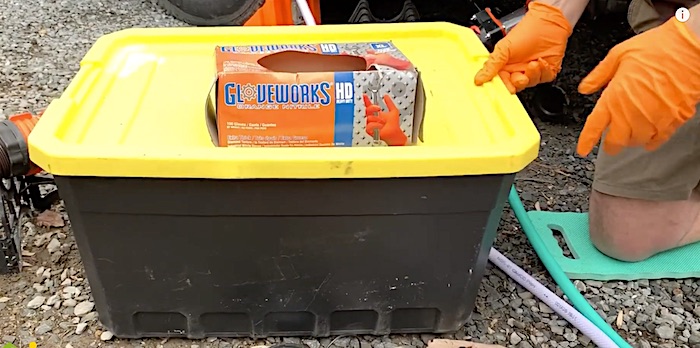
An RV sewer hose bin is a sort of storage compartment that is built especially for these types of hoses. Some models of RV come with them built right in, others require you to purchase or even build your own. RV sewer hose bins are practical and make storing the hose quite manageable.
2. Bumper Storage for Your RV Sewer Hose
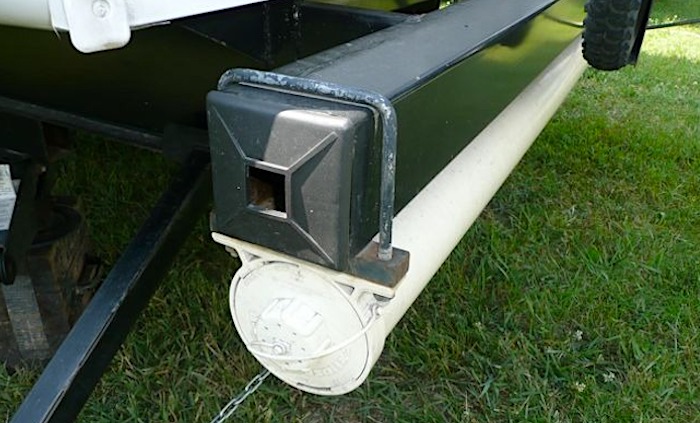
Many RV manufacturers are thoughtful enough to include a concealed storage area in the big boxy bumpers that come on their rigs. These hollowed-out storage areas are known as bumper stores. They are one of the most common storage places for RV sewer hoses.
3. Sewer Hose Storage Bag
A sewer hose bag is just as it sounds; a bag for storing your RV sewer hose. Similar to bins, and bumpers, sewer hose bags provide ample storage for hoses and allow for easier management of the hose while it’s not in use. Bags don’t offer as much protection or convenience as bumper and bin-type storage, but nonetheless, they are helpful and cost-efficient.
4. DIY Storage for Sewer Hose
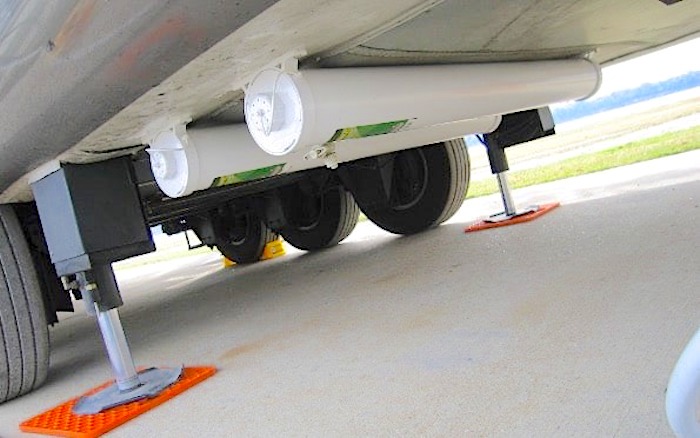
One of the most popular methods for storing RV sewer hoses is using DIY storage containers. Everything from five-gallon buckets to Rubbermaid totes is commonly used in the construction of these DIY RV sewer hose storages.
Any large container that allows enough space for the hose, easily fits in the RV, has a lid and a few holes in the bottom, and is easy to handle, will work for a DIY RV sewer hose storage.
5. Use End Caps When Storing the Sewer Hose
The end caps of your RV sewer hose are important to keep track of while dumping, cleaning, and storing your hose. For that purpose, it is recommended to keep them close at hand and in plain sight while working your way through all of the above. Some folks keep a special bucket to keep them in during the process.
When you’re ready to store your hose remember to replace the end caps back onto the hose. Just make sure that you’ve allowed an adequate amount of time for drying the hose after it’s cleaned and disinfected.
Where Do You Store Sewer Hose Fittings?
Depending on the type of storage you use for your RV sewer hose itself, there may or may not be enough spare room to fit all of the sewer hose fittings as well. In this case, you will need to be creative.
For many RVers, a simple plastic tote with a tight-fitting lid is adequate storage for their extra sewer hose fittings. Other RVers are able to fit their RV sewer hose fittings into the hose itself as well as the nooks and crannies of their storage spaces.
If you are having trouble finding the space for your RV sewer hose fittings, consider attaching a plastic or metal container with a tight-fitting lid to the back bumper of your RV. If our storage container for fittings is air-tight, you can even store it inside the RV itself if need be without fear of odors or contamination.
Can I Use My Freshwater Hose to Clean My Sewer Hose?
Unfortunately, the theory of using your freshwater hose (also known as gray water hose) to clean your sewer hose (also known as black water hose) is somewhat of a myth, albeit one that makes a bit of sense.
The real problem with the theory, that if you dump your black hose and then your gray, gray water will clean out the black water, is that the gray water pipe is typically only 1.5 inches wide and the black water pipe is normally 3 inches wide.
Best case scenario? The gray water cleans even the smallest amount of black water residue from the sides of the much larger pipe.
Ultimately, flushing your black pipe with your gray pipe does not replace the need to properly clean the sewer hose.
Final Words About RV Sewer Hoses
That’s it, folks! It’s really that simple. There is no way around the need to clean your RV sewer hose and properly store it after camping and between RVing seasons.
Hopefully, your question regarding how to clean and store your RV sewer hose has been answered. If you are still unclear or have questions, please feel free to leave us a comment below and we’ll do our best to get you the answer you’re looking for!
Related Reading:
– How Do I Support My RV Sewer Hose?
– What are RV Sewer Hose Weights?
-RV Hookups Explained (Water, Sewer, Electric)
-How To Setup Your RV Campsite For Beginners
Mike Scarpignato – Bio
Mike Scarpignato created RVBlogger.com over five years ago in 2018 to share all we have learned about RV camping.
Mike is an avid outdoorsman with decades of experience tent camping and traveling in his 2008 Gulf Stream Conquest Class C RV and 2021 Thor Challenger Class A motorhome.
We attend RV Shows and visit RV dealerships all across the country to tour and review drivable motorhomes and towable trailers to provide the best evaluations of these RVs in our blog articles and YouTube videos.
We are 3/4-time RVers who created RVBlogger.com to provide helpful information about all kinds of RVs and related products, gear, camping memberships, tips, hacks and advice.


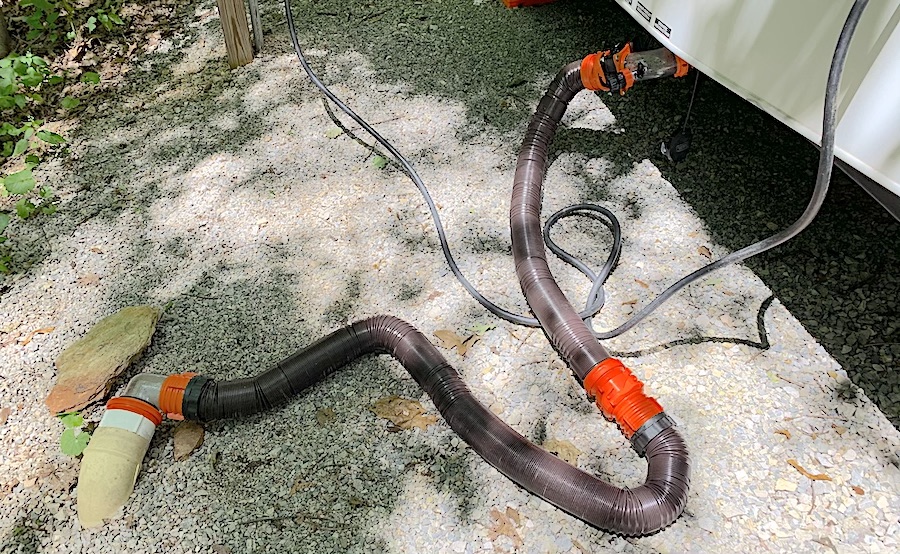
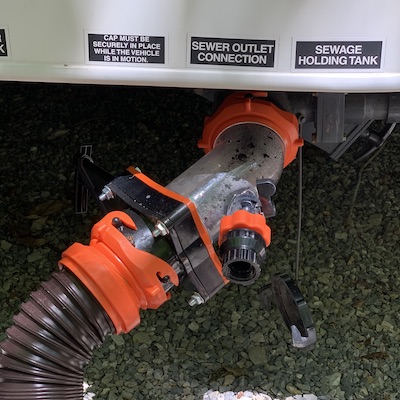
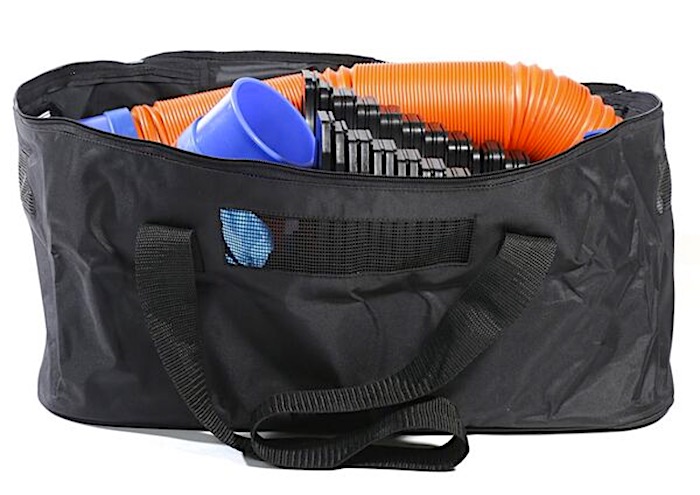
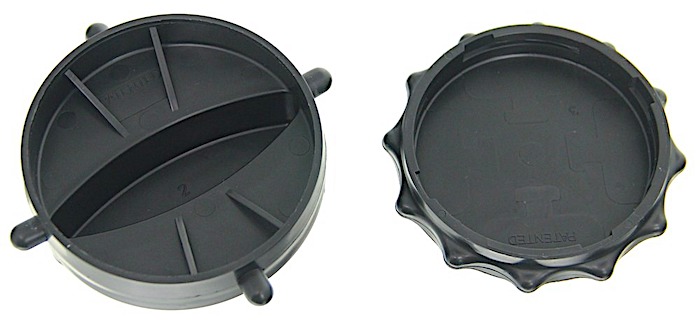
If you have a black water flush system do you still need to do the rhino-blaster?
Nicely done blog and info. Thank you!
Doesn’t bleach affect the ethicacy of a sewer hose and it’s gaskets? Is there Any other solution other than bleach?